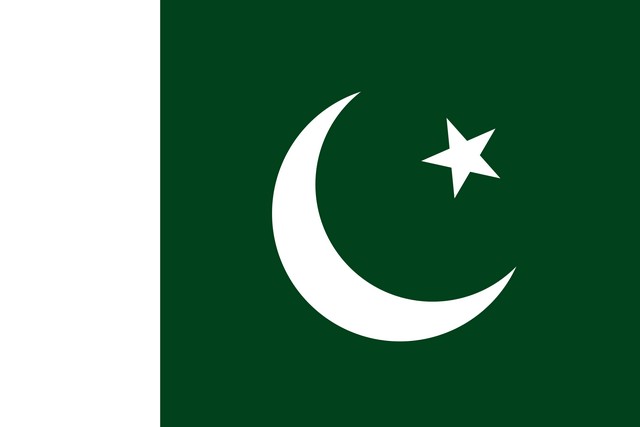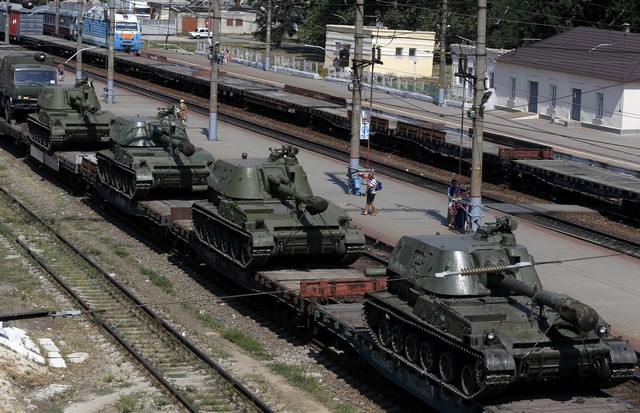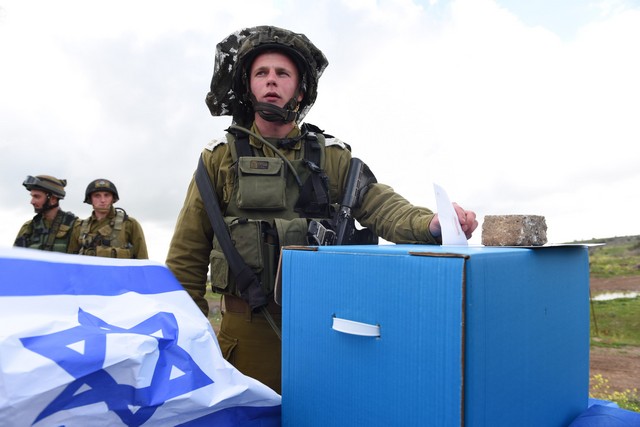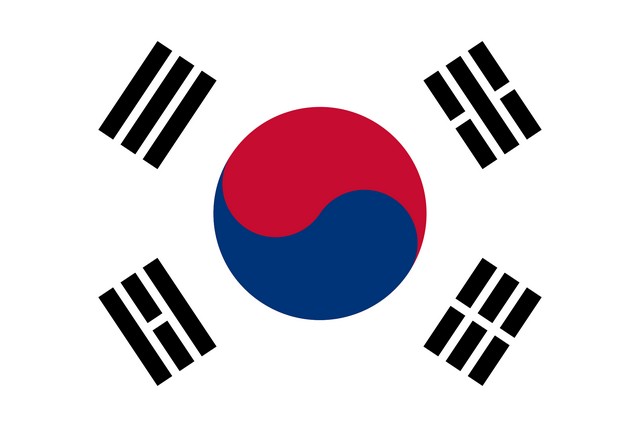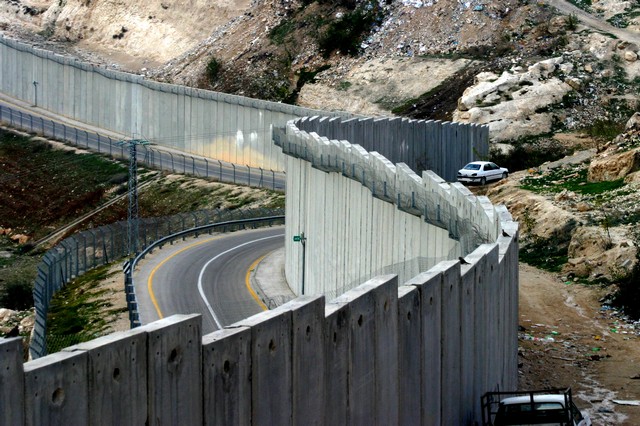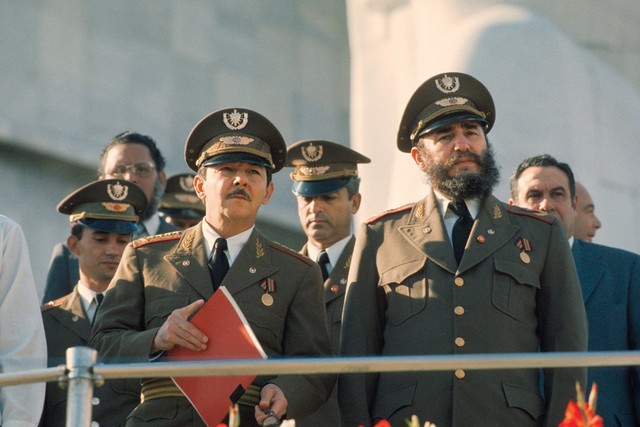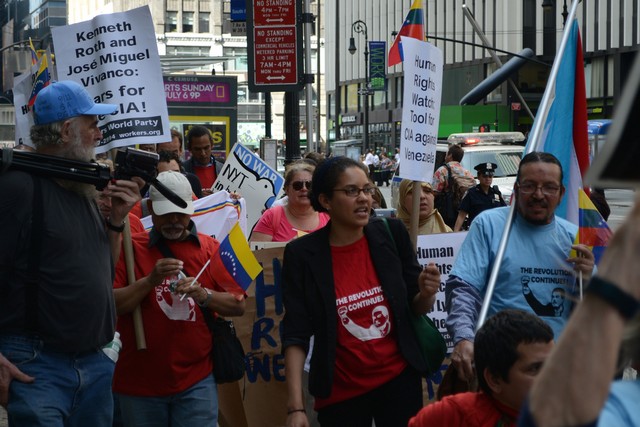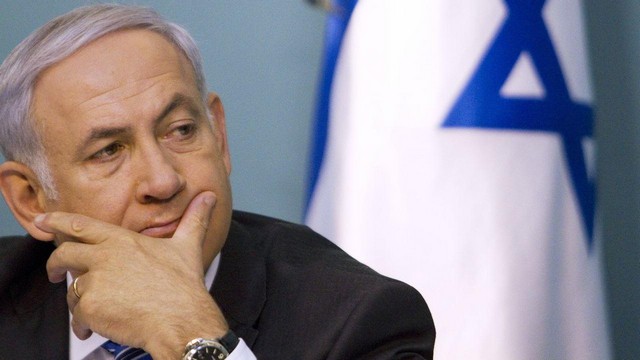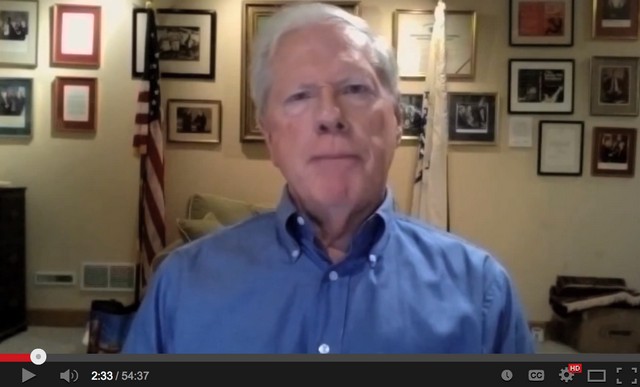By Paul Craig Roberts
Press Club Of Mexico Awards Paul Craig Roberts International Medal For Journalism Excellence
Last week in Mexico at the annual awards conference of the Club De Periodistas De Mexico I was given the International Award For Excellence In Journalism. In my speech I emphasized that Truth is the country of real journalists. Unlike presstitutes, the loyalty of real journalists is to Truth, not to a government or corporate advertiser. Once a journalist sacrifices Truth to loyalty to a government, he ceases to be a journalist and becomes a propagandist.
The speech is published in English and Spanish here: http://vocesdelperiodista.mx/nacional/discurso-completo-del-doctor-paul-craig-roberts-ingles-y-espanol/
The translators missed a few bits. Here is the intact speech:
Truth Is Our Country
Paul Craig Roberts
Club De Periodistas De Mexico, March 12, 2015
Colleagues,
Thank you for this recognition, for this honor. As Jesus told the people of Nazareth, a prophet is without honor in his own country. In the United States, this is also true of journalists.
In the United States journalists receive awards for lying for the government and for the corporations. Anyone who tells the truth, whether journalist or whistleblower, is fired or prosecuted or has to hide out in the Ecuadoran Embassy in London, like Julian Assange, or in Moscow, like Edward Snowden, or is tortured and imprisoned, like Bradley Manning.
Mexican journalists pay an even higher price. Those who report on government corruption and on the drug cartels pay with their lives. The Internet encyclopedia, Wikipedia, has as an entry a list by name of journalists murdered in Mexico. This is the List of Honor. Wikipedia reports than more than 100 Mexican journalists have been killed or disappeared in the 21st century.
Despite intimidation the Mexican press has not abandoned its job. Because of your courage, I regard this award bestowed on me as the greatest of honors.
In the United States real journalists are scarce and are becoming more scarce. Journalists have morphed into a new creature. Gerald Celente calls US journalists “presstitutes,” a word formed from press prostitute. In other words, journalists in the United States are whores for the government and for the corporations.
The few real journalists that remain are resigning. Last year Sharyl Attkisson, a 21-year veteran reporter with CBS resigned on the grounds that it had become too much of a fight to get truth reported. She was frustrated that CBS saw its purpose to be a protector of the powerful, not a critic.
Recently Peter Oborne, the UK Telegraph’s chief political commentator, explained why he resigned. His stories about the wrongdoings of the banking giant, HSBC, were spiked, because HSBC is an important advertiser for the Telegraph. Osborne says: “The coverage of HSBC in Britain’s Telegraph is a fraud on its readers. If major newspapers allow corporations to influence their content for fear of losing advertising revenue, democracy itself is in peril.” http://www.globalresearch.ca/why-i-have-resigned-from-the-telegraph/5432659
Last summer former New York Times editor Jill Abramson in a speech at the Chautauqua Institution said that the New York Times withheld information at the request of the White House. She said that for a number of years the press in general did not publish any stories that upset the White House. She justified this complete failure of journalism on the grounds that “journalists are Americans, too. I consider myself to be a patriot.”
So in the United States journalists lie for the government because they are patriotic, and their readers and listeners believe the lies because they are patriotic.
Our view differs from the view of the New York Times editor. The view of those of us here today is that our country is not the United States, it is not Mexico, our country is Truth. Once a journalist sacrifices Truth to loyalty to a government, he ceases to be a journalist and becomes a propagandist.
Recently, Brian Williams, the television news anchor at NBC, destroyed his career because he mis-remembered an episode of more than a decade ago when he was covering the Iraq War. He told his audience that a helicopter in which he was with troops in a war zone as a war correspondent was hit by ground fire and had to land.
But the helicopter had not been hit by ground fire. His fellow journalists turned on him, accusing him of lying in order to enhance his status as a war correspondent.
On February 10, NBC suspended Brian Williams for 6 months from his job as Managing Editor and Anchor of NBC Nightly News.
Think about this for a moment. It makes no difference whatsoever whether the helicopter had to land because it had been hit by gun fire or for some other reason or whether it had to land at all. If it was an intentional lie, it was one of no consequence. If it was a mistake, an episode of “false memory,” why the excessive reaction? Psychologists say that false memories are common.
The same NBC that suspended Brian Williams and the journalists who accused him of lying are all guilty of telling massive lies for the entirety of the 21st century that have had vast consequences. The United States government has been, and still is, invading, bombing, and droning seven or eight countries on the basis of lies told by Washington and endlessly repeated by the media. Millions of people have been killed, maimed, and displaced by violence based entirely on lies spewing out of the mouths of Washington and its presstitutes.
We know what these lies are: Saddam Hussein’s weapons of mass destruction. Assad of Syria’s use of chemical weapons. Iranian nukes. Pakistani and Yemeni terrorists. Terrorists in Somalia. The endless lies about Gaddafi in Libya, about the Taliban in Afghanistan. And now the alleged Russian invasion and annexation of Ukraine.
All of these transparent lies are repeated endlessly, and no one is held accountable. But one journalist mis-remembers one insignificant detail about a helicopter ride and his career is destroyed.
We can safely conclude that the only honest journalism that exists in the United States is provided by alternative media on the Internet.
Consequently, the Internet is now under US government attack. “Truth is the enemy of the state,” and Washington intends to shut down truth everywhere.
Washington has appointed Andrew Lack, the former president of NBC News, to be the chief executive of the Broadcasting Board of Governors. His first official statement compared RT, Russia Today, the Russian-based news agency, with the Islamic State and Boko Haram. In other words, Mr. Lack brands RT as a terrorist organization.
The purpose of Andrew Lack’s absurd comparison is to strike fear at RT that the news organization will be expelled from US media markets. Andrew Lack’s message to RT is: “lie for us or we are going to expel you from our air waves.”
The British already did this to Iran’s Press TV.
In the United States the attack on Internet independent media is proceeding on several fronts. One is known as the issue of “net neutrality.” There is an effort by Washington, joined by Internet providers, to charge sites for speedy access. Bandwidth would be sold for fees. Large media corporations, such as CNN and the New York Times, would be able to pay the prices for a quickly opening website. Smaller independent sites such as mine would be hampered with the slowness of the old “dial-up” type bandwidth. Click on CNN and the site immediately opens. Click on paulcraigroberts.org and wait five minutes.
You get the picture. This is Washington’s plan and the corporations’ plan for the Internet.
But it gets worse. The Electronic Frontier Foundation, which attempts to defend our digital rights, reports that so-called “free trade agreements,” such as the Trans Pacific Partnership (and the Trans Atlantic Partnership) impose prison sentences, massive fines, and property seizures on Internet users who innocently violate vague language in the so-called trade agreements.
Recently, a young American, Barrett Brown, was sentenced to 5 years in prison and a fine of $890,000 for linking to allegedly hacked documents posted on the Internet. Barrett Brown did not hack the documents. He merely linked to an Internet posting, and he has no prospect of earning $890,000 over the course of his life.
The purpose of the US government’s prosecution, indeed, persecution, of this young person is to establish the precedent that anyone who uses Internet information in ways that Washington disapproves, or for purposes that Washington disapproves, is a criminal whose life will be ruined. The purpose of Barrett Brown’s show trial is to intimidate. It is Washington’s equivalent to the murder of Mexican journalists.
But this is prologue. Now we turn to the challenge that Washington presents to the entire world.
It is the nature of government and of technology to establish control. People everywhere face the threat of control by government and technology. But the threat from Washington is much greater. Washington is not content with only controlling the citizens of the United States. Washington intends to control the world.
Michael Gorbachev is correct when he says that the collapse of the Soviet Union was the worst thing that has happened to humanity, because the Soviet collapse removed the only constraint on Washington’s power.
The Soviet collapse released a terrible evil upon the world. The neoconservatives in Washington concluded that the failure of communism meant that History has chosen American “democratic capitalism,” which is neither democratic nor capitalist, to rule the world. The Soviet collapse signaled “the End of History,” by which is meant the end of competition between social, political and economic systems.
The choice made by History elevated the United States to the pre-eminent position of being the “indispensable and exceptional” country, a claim of superiority. If the United States is “indispensable,” then others are dispensable. If the United States is exceptional, then others are unexceptional. We have seen the consequences of Washington’s ideology in Washington’s destruction of life and stability in the Middle East.
Washington’s drive for World Hegemony, based as it is on a lie, makes necessary the obliteration of Truth. As Washington’s agenda of supremacy is all encompassing, Washington regards truth as a greater enemy than Russians, Muslim terrorists, and the Islamic State.
As truth is Washington’s worst enemy, everyone associated with the truth is Washington’s enemy.
Latin America can have no illusions about Washington. The first act of the Obama Regime was to overthrow the democratic reformist government of Honduras. Currently, the Obama Regime is trying to overthrow the governments of Venezuela, Ecuador, Bolivia, and Argentina.
As Mexicans know, in the 19th century Washington stole half of Mexico. Today Washington is stealing the rest of Mexico. The United States is stealing Mexico via financial imperialism, by subordinating Mexican agriculture and self-sustaining peasant agricultural communities to foreign-owned monoculture, by infecting Mexico with Monsanto’s GMO’s, genetically modified organisms, seeds that do not reproduce, chemicals that destroy the soil and nature’s nutrients, seeds that leave Mexico dependent on Monsanto for food crops with reduced nutritional value.
It is easy for governments to sell out their countries to Washington and the North American corporations. Washington and US corporations pay high prices for subservience to their control. It is difficult for countries, small in economic and political influence, to stand against such power. All sorts of masks are used behind which Washington hides US exploitation–globalism, free trade treaties . . .
But the world is changing. Putin has revived Russia, and Russia has proved its ability to stand up to Washington.
On a purchasing power basis, China now has the largest economy in the world.
As China and Russia are now strategic allies, Washington cannot act against one without acting against the other. The two combined exceed Washington’s capabilities.
The United States government has proven to the entire world that it is lawless. A country that flaunts its disrespect of law cannot provide trusted leadership.
My conclusion is that Washington’s power has peaked.
Another reason Washington’s power has peaked is that Washington has used its power to serve only itself and US corporations. The Rest of the World is dispensable and has been left out.
Washington’s power grew out of World War 2. All other economies and currencies were devastated. This allowed Washington to seize the world reserve currency role from Great Britain.
The advantage of being the world reserve currency is that you can pay your bills by printing money. In other words, you can’t go broke as long as other countries are willing to hold your fiat currency as their reserves.
But if other countries were to decide not to hold US currency as reserves, the US could go broke suddenly.
Since 2008 the supply of US dollars has increased dramatically in relation to the ability of the real economy to produce goods and services. Whenever the growth of money outpaces the growth of real output, trouble lies ahead. Moreover, Washington’s policy of imposing sanctions in an effort to force other countries to do its will is causing a large part of the world known as the BRICS to develop an alternative international payments system.
Washington’s arrogance and hubris have caused Washington to ignore the interests of other countries, including those of its allies. Even Washington’s European vassal states show signs of developing an independent foreign policy in their approach to Russia and Ukraine. Opportunities will arise for governments to escape from Washington’s control and to pursue the interests of their own peoples.
The US media has never performed the function assigned to it by the Founding Fathers. The media is supposed to be diverse and independent. It is supposed to confront both government and private interest groups with the facts and the truth. At times the US media partially fulfilled this role, but not since the final years of the Clinton Regime when the government allowed six mega-media companies to consolidate 90% of the media in their hands.
The mega-media companies that control the US media are GE, News Corp, Disney, Viacom, Time Warner, and CBS. (GE owns NBC, formerly an independent network. News Corp owns Fox News, the Wall Street Journal, and British newspapers. Disney owns ABC. Time Warner owns CNN.)
The US media is no longer run by journalists. It is run by former government officials and corporate advertising executives. The values of the mega-media companies depend on their federal broadcast licenses. If the companies go against the government, the companies take a risk that their licenses will not be renewed and, thus, the multi-billion dollar values of the companies fall to zero. If media organizations investigate wrongful activities by corporations, they risk the loss of advertising revenues and become less viable.
Ninety percent control of the media gives government a Ministry of Propaganda, and that is what exists in the United States. Nothing reported in the print or TV media can be trusted.
Today there is a massive propaganda campaign against the Russian government. The incessant flow of disinformation from Washington and the media has destroyed the trust between nuclear powers that President Reagan and President Gorbachev worked so hard to create. According to polls, 62% of the US population now regards Russia as the main threat.
I conclude my remarks with the observation that there can be no greater media failure than to bring back the specter of nuclear war. And that is what the US media has achieved.
Dr. Paul Craig Roberts was Assistant Secretary of the Treasury for Economic Policy and associate editor of the Wall Street Journal.
16 March, 2015
Paulcraigroberts.org


